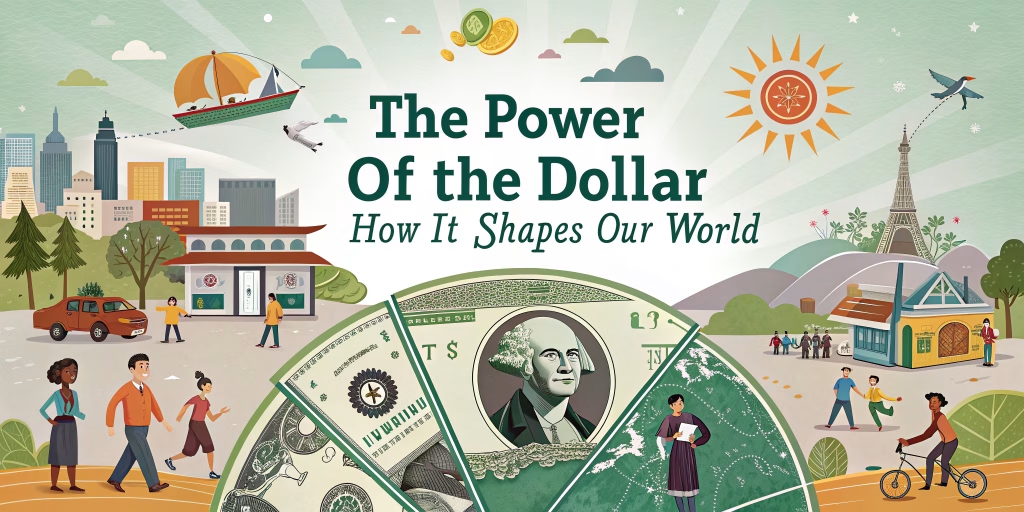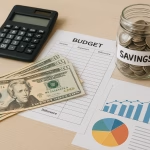The U.S. dollar shapes our everyday lives. It affects small shops, big trade deals, and new businesses. When the dollar’s value changes, prices change. When it’s strong, other countries use it too. The dollar is more than money—it runs the world’s markets.
In this post, you’ll learn:
- How the dollar grew into a global leader.
- How it helps or hurts small businesses.
- Why it matters in laws and contracts.
- Ways entrepreneurs can use their power.
The Dollar’s Role in the World
You see dollars in stores and online. Countries keep dollars to stay steady. The IMF says over 60% of global reserves are in dollars. That shows how vital the dollar is.
How the Dollar Got Strong
At first, the U.S. used many coins and bills. People slowly trusted the dollar more because the U.S. made clear rules and steady choices. The World Bank finds that solid policies built this trust.
Bretton Woods, 1944
World leaders met to rebuild after war. They set fixed rates so many currencies tied to the dollar. Even after they dropped the system, the dollar stayed at the center of finance.
Switching from Gold to Faith, 1971
The U.S. stopped backing dollars with gold. Instead, people trusted the U.S. government. This gave the dollar new freedom. It let the U.S. run its economy without gold limits. Now, almost every country uses this trust-based money.
Why Countries Hold Dollars
Governments keep dollars for three reasons:
- Save value securely.
- Trade with other nations.
- Measure costs and prices.
Big nations like China and Japan hold large dollar piles. Smaller countries do too. This helps them beat hard times.
How the Dollar Helps the U.S.
A strong dollar means low interest rates. People and companies borrow cheaply. Investors from around the world pour money into the U.S. This trust fuels U.S. growth. The U.S. also shapes global trade rules. Its dollar power gives it a strong voice—but also heavy duties.
The Downside of Strength
When the dollar is high, U.S. exports cost more. Other countries buy less. Too-strong dollars can shrink sales abroad. Back home, cheaper imports can hurt local makers. Jobs in factories may vanish. Even a top player has to watch its own team.
Will the World Drop the Dollar?
Some nations eye other currencies like the euro or yuan. Russia and China test new trade deals to cut dollar ties. Cryptocurrencies add more options. This is not a dollar overthrow but a search for balance.
Why Shift Away?
- Political rifts push nations to seek new partners.
- Some want full control over money policy.
- New tech, like digital coins, gives fresh choices.
Inflation and Buying Power
When prices rise, each dollar buys less. If candy cost $1 last year but $1.10 now, your dollar shrinks. Even small price swings change real buying power a lot.
Key signs of dollar health:
- Interest rates—higher rates can boost value.
- Jobs—more jobs mean a strong economy.
- GDP—growing output lifts the dollar.
Currency Swings and Investors
Investors watch dollar moves closely. A quick rise or fall can change returns on overseas bets. Sharp shifts can hurt global portfolios. To stay safe, investors:
- Spread their money across several currencies.
- Use tools to offset losses.
- Follow financial news every day.
What’s Next for the Dollar?
The Chinese yuan is gaining ground. Cryptos like Bitcoin shape new money ideas. China pushes its yuan abroad. Digital cash could reshape trade again. Experts say the dollar will stay key if U.S. policies stay smart. The dollar will remain a top reserve for decades.
A Real-Life Note
I once saw a price change at my local store after the dollar rose. It made me pay attention to news I once skipped. Talking about money with friends shows how it impacts us all.
Takeaway
The dollar’s story moves from old gold rules to modern tech. It drives world trade and our local shops. It can lift or limit businesses. It stays strong thanks to trust in the U.S. government. But new currencies and tech may share its lead. Understanding money’s journey helps you save, spend, and invest wisely.
Enjoy exploring this story of money, power, and global connection!





